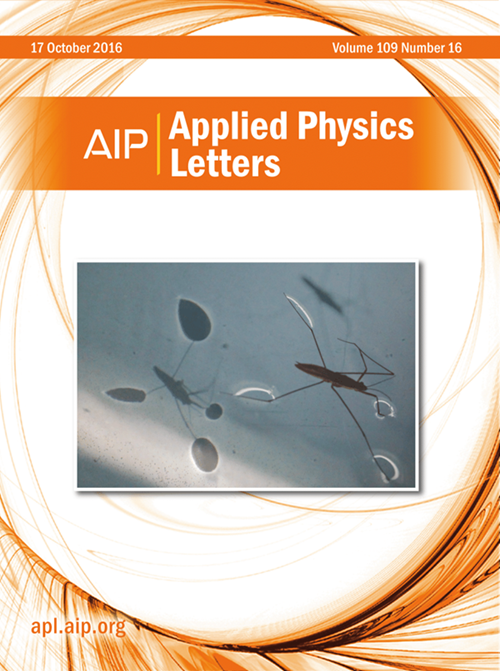Observation of electronic and structural transitions in two-dimensional ferroelastic semiconductor of Nb2GeTe4 via pressure manipulation
IF 3.5
2区 物理与天体物理
Q2 PHYSICS, APPLIED
引用次数: 0
Abstract
Nb2GeTe4, a two-dimensional ferroelastic semiconductor, has garnered intense research interest due to its nontrivial physicochemical characteristics of high carrier mobility as well as extraordinary ferroelasticity and optical absorbance along with potential applications in electronic and optoelectronic devices. In this work, the high-pressure structural, vibrational, and electrical transport properties of Nb2GeTe4 up to 60.0 GPa under different hydrostatic environments were systematically studied by Raman spectroscopy, electrical conductivity, and first-principles theoretical calculations. Under non-hydrostatic compression, Nb2GeTe4 experienced a metallization at 11.8 GPa originating from the closure of bandgap due to the considerable compression of interlayer distance and sequential an isostructural phase transition (IPT) at 26.5 GPa. The comparable metallization pressure and the pronounced delay of IPT by ∼4.0 GPa under hydrostatic condition can be reasonably interpreted by the influence of deviatoric stress. Upon decompression, the phase transition of Nb2GeTe4 was demonstrated to be reversible with the possible structural destruction under different hydrostatic environments. Moreover, Nb2GeTe4 underwent a Ohmic-to-super-Ohmic conversion at 1000 mV under high pressure, which was presumably caused by the higher sinusoidal voltage than its thermal voltage. These findings enrich our foundational comprehension on high-pressure physicochemical properties of Nb2GeTe4, thereby fostering its potential applications in electronic and optoelectronic devices.求助全文
约1分钟内获得全文
求助全文
来源期刊

Applied Physics Letters
物理-物理:应用
CiteScore
6.40
自引率
10.00%
发文量
1821
审稿时长
1.6 months
期刊介绍:
Applied Physics Letters (APL) features concise, up-to-date reports on significant new findings in applied physics. Emphasizing rapid dissemination of key data and new physical insights, APL offers prompt publication of new experimental and theoretical papers reporting applications of physics phenomena to all branches of science, engineering, and modern technology.
In addition to regular articles, the journal also publishes invited Fast Track, Perspectives, and in-depth Editorials which report on cutting-edge areas in applied physics.
APL Perspectives are forward-looking invited letters which highlight recent developments or discoveries. Emphasis is placed on very recent developments, potentially disruptive technologies, open questions and possible solutions. They also include a mini-roadmap detailing where the community should direct efforts in order for the phenomena to be viable for application and the challenges associated with meeting that performance threshold. Perspectives are characterized by personal viewpoints and opinions of recognized experts in the field.
Fast Track articles are invited original research articles that report results that are particularly novel and important or provide a significant advancement in an emerging field. Because of the urgency and scientific importance of the work, the peer review process is accelerated. If, during the review process, it becomes apparent that the paper does not meet the Fast Track criterion, it is returned to a normal track.
 求助内容:
求助内容: 应助结果提醒方式:
应助结果提醒方式:


